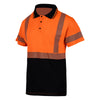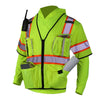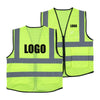The Most Common OSHA Guidelines Violated by Employers
Welcome to our guide on the most common OSHA (Occupational Safety and Health Administration) guidelines violated by employers. This article aims to shed light on the key areas where employers often fall short in adhering to OSHA's regulations, which are crucial for ensuring workplace safety.
Understanding these common violations is essential for employers and employees alike, as it helps in fostering a safer working environment and ensures compliance with federal law.
Whether you're an employer seeking to improve your workplace safety protocols or an employee aiming to be more aware of your rights and the safety standards in your workplace, this article offers valuable insights into the world of OSHA and workplace safety.
Table of contents:
- Most Frequently Reported OSHA Violations
- Understanding "Types of Violation" in OSHA Context
- Willful Violations: Definition and Distinction
- Real World Examples of OSHA Willful Violation Cases
- Most Serious Type of OSHA Violation
- "Other Than Serious" Violations
- Consequences of Violating OSHA Standards
- Handling of Health and Safety Violations by OSHA
- Conclusion
Most Frequently Reported OSHA Violations
Let's delve into the most frequently reported OSHA violations of 2023, shedding light on the areas where employers often fall short in ensuring occupational safety and health standards in the workplace.

1. Fall Protection: 7,271 Violations
At the top of the list, we find fall protection violations. This has been the most cited violation for 13 consecutive years. In 2023, there were a staggering 7,271 violations in this category alone.
Employers often fail to provide proper fall protection equipment like safety harnesses and nets or adequate training to workers, especially in the construction industry. The lack of fall protection can lead to severe accidents, sometimes even fatal ones.
2. Hazard Communication: 3,213 Violations
With 3,213 violations, hazard communication comes in second. This involves the proper labeling and documentation of hazardous chemicals in the workplace. Many employers struggle with this due to the complexity and paperwork involved.
Essential components like labeling containers correctly, maintaining an up-to-date chemical inventory, and having Safety Data Sheets readily accessible are often overlooked.
3. Ladders: 2,978 Violations
Ladder-related violations, totaling 2,978, indicate a significant risk area in many workplaces. Most ladder injuries and deaths are due to falls, often resulting from improper ladder use, such as using a ladder for a purpose it wasn’t designed for or failing to secure it properly.
4. Scaffolding: 2,859 Violations
Scaffolding violations, amounting to 2,859, highlight the dangers construction workers face when working at heights. The primary concern here is ensuring that scaffolding is designed by qualified persons and constructed and loaded according to that design.
5. Powered Industrial Trucks: 2,561 Violations
These violations, which include forklifts and motorized hand trucks, totaled 2,561. This reflects issues with proper training and maintenance of these vehicles, which can lead to severe workplace accidents.
6. Lockout/Tagout: 2,554 Violations
With 2,554 violations, this category involves procedures to ensure that machines are properly shut off and unable to be started up again before maintenance or repair work is completed. The violations often occur due to insufficient training or failure to follow energy control protocols.
7. Respiratory Protection: 2,481 Violations
This category, with 2,481 violations, involves ensuring workers have proper respiratory protection in environments with harmful dust, fog, smoke, vapor, or gases. Non-compliance can lead to serious respiratory illnesses.
8. Fall Protection - Training Requirements: 2,112 Violations
This involves providing adequate training about fall protection to workers. In 2023, there were 2,112 violations in this category, indicating a lack of proper training programs in many workplaces.
9. Eye and Face Protection: 2,074 Violations
This area, with 2,074 violations, requires employers to provide appropriate protection against hazards that can cause injury to the eyes or face, such as flying particles or chemical gases.
10. Machine Guarding: 1,644 Violations
This last category in the top 10, with 1,644 violations, involves protecting workers from the dangers posed by machines in their work area. This could include parts of machinery, in-running nip points, or flying chips and sparks during operation.
Understanding "Types of Violation" in OSHA Context
When we talk about OSHA (Occupational Safety and Health Administration) violations, it's important to understand the different types they categorize. Each type signifies a different level of risk or non-compliance with OSHA regulations. Here's a breakdown:
1. Serious Violations
These happen when there's a significant chance that death or serious physical harm could result, and the employer should have known about the hazard. For example, if a construction company fails to provide fall protection equipment where there's a risk of a fall, that's a serious violation.
2. Other-Than-Serious Violations
These are for less critical issues but still relate to job safety and health. An example might be when an employer doesn't post the required OSHA poster in the workplace. While it might not cause direct harm, it's still a breach of OSHA requirements.
3. Willful Violations
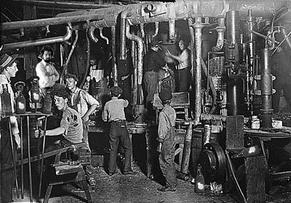
These are among the most serious and are issued when an employer knowingly fails to comply with legal requirements or acts with plain indifference to employee safety. Imagine a factory where workers are exposed to hazardous chemicals, and the employer knowingly doesn’t provide the necessary personal protective equipment.
4. Repeated Violations
If an employer has been cited for a specific violation and it's found again upon re-inspection, it's classified as a repeated violation. This shows a pattern of disregard for OSHA standards.
5. Failure to Abate
This type of violation is issued when an employer doesn't correct a previously cited violation within the allowed time period. For instance, if an employer was cited for not having proper safety nets and doesn't install them by the deadline, it becomes a failure to abate violation.
Each of these violation types comes with its own set of penalties and implications, depending on the severity and the risk posed to employee safety.
Understanding these categories helps employers prioritize their safety efforts to not only comply with OSHA standards but also to ensure a safe working environment for their employees.
Related: OSHA Requirements for High Visibility Clothing - Updated for 2023
Willful Violations: Definition and Distinction
In the world of OSHA, willful violations are a big deal. These are not just simple mistakes or oversights.
A willful violation happens when an employer knows about an OSHA standard but chooses not to follow it.
It's like they see a hazard, like fall hazards or electrical safety risks, and decide to do nothing about it. This could put workers in immediate danger. Here's how willful violations are different from other types:
-
Seriousness: Willful violations are more serious than other types because they show that the employer knew about the safety risks (like hazardous chemicals or fall protection standards) but didn't care to fix them.
-
Penalties: Because these violations are so serious, the penalties are usually much bigger. This could include larger fines or even legal action if the violation leads to serious injuries or worker complaints.
-
Intent: The key difference is the intent. With other violations, like not following lockout tagout procedures or failing to provide safety training, it might be because of a lack of knowledge or resources. But with willful violations, the employer knows the rule (like the need for fall protection training or using safety nets) but ignores it.
Understanding these differences helps in recognizing the importance of following OSHA rules to protect workers and avoid serious safety risks. It's all about creating a safe workplace where everyone can work without fear of getting hurt.
Real World Examples of OSHA Willful Violation Cases

Here are some real-world examples of OSHA willful violation cases:
-
Donghee Alabama LLC: This company was cited for willfully exposing employees to caught-in and crushed-by hazards by requiring them to operate machines with non-functioning safety laser scanners.
-
Evoqua Water Technologies LLC: OSHA cited this company for failing to protect employees working in excessive heat, leading to an employee suffering heat exhaustion.
-
UHS of Centennial Peaks LLC: Operating as Centennial Peaks Hospital, this facility was cited for failing to protect employees from violence in the workplace.
-
U.S. Postal Service in Ankeny, Iowa: Cited for obstructing exit routes and failing to train employees on emergency action procedures.
-
Chewy Inc.: An online pet supply retailer cited after a fatality at their distribution facility, where an employee suffered fatal injuries while operating a stand-up industrial truck.
-
Avid Pallet Services LLC: This company was cited for continued exposure of employees to wood dust, failing to implement sufficient controls and training.
-
Eye Productions Inc.: Cited for failing to protect employees from hazards while filming a television show, where a stuntman was injured during a stunt.
These cases illustrate the range of violations and industries OSHA oversees, emphasizing the importance of compliance with safety standards.
Most Serious Type of OSHA Violation
When it comes to OSHA (Occupational Safety and Health Administration) violations, the most serious kind is the "willful violation".
This is when an employer knows about an OSHA standard or a safety hazard but decides not to do anything about it. Imagine knowing that a machine needs an electronic safety device to be safe but not installing it. That's a willful violation.
The impact of this kind of violation on workplace safety is huge. It can lead to serious accidents or even deaths. This is why OSHA takes these violations very seriously.
Employers who are found guilty of willful violations can face really big fines and sometimes even legal action, especially if the violation leads to serious harm.
"Other Than Serious" Violations
Now, let's talk about "other than serious" violations. These are less severe than willful or serious violations. They might not cause direct physical harm or pose a direct threat to worker safety, but they're still important.
For example, if an employer doesn't provide the necessary employee training as required by OSHA standards, it could be considered an "other than serious" violation.
Compared to willful or serious violations, the penalties for "other than serious" violations are usually lower. But, they still show that the employer is not fully complying with OSHA regulations, which can lead to problems down the road.
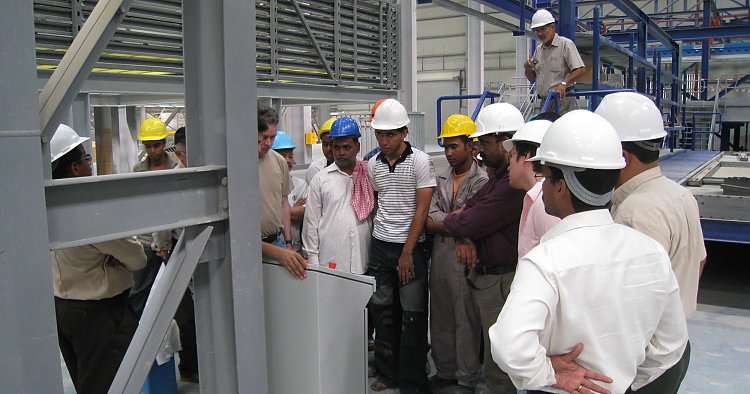
source: Prilholfer consulting
Consequences of Violating OSHA Standards
Violating OSHA standards can have several consequences for employers:
-
Legal Consequences: If a serious OSHA violation occurs, an employer can face legal action. This could mean going to court and dealing with all the legal processes.
-
Financial Penalties: OSHA can issue fines for violations. These fines can be pretty high, especially for willful violations. Think of it like a ticket for not following the rules, but much more expensive.
-
Reputational Damage: Being cited for OSHA violations can harm an employer's reputation. It can make it harder to hire good employees or retain current ones, and it can affect how customers and the public view the company.
-
Operational Impact: Sometimes, after an OSHA citation, an employer might have to stop work to fix the violation. This can lead to lost time and money.
Employers should always strive to meet OSHA standards. Not just because it's the law, but because it's about keeping people safe at work. It's always better to prevent problems than to deal with the consequences later. Remember, a safe workplace is a productive workplace!
Handling of Health and Safety Violations by OSHA
OSHA (Occupational Safety and Health Administration) has a well-defined approach to managing and correcting health and safety violations in the workplace. This process is crucial to ensure employee safety and to maintain standards in general industry and other sectors.
-
Identification of Violations: The process usually starts with identifying safety hazards, which can occur through routine inspections by OSHA inspectors, employee complaints, or after workplace injuries. OSHA inspectors are trained to recognize hazards and identify violations of OSHA standards.
-
Citing Violations: Once a violation is identified, OSHA issues a citation to the employer. These citations describe the nature of the violation, whether it's related to fall protection, ladder violations, inadequate electronic safety devices, or other safety protocols.
-
Most Cited Violations: OSHA keeps track of the most cited violations, which helps in focusing their inspection efforts. Common OSHA violations often include issues with hazard communication, respiratory protection, and electrical safety.
-
Penalties for Violations: Penalties depend on the type and severity of the violation. Willful or repeated violations result in higher fines, while 'other-than-serious' violations might have smaller penalties. These fines are designed to encourage employers to comply with federal law and protect employees.
-
Corrective Measures: Along with the citation, OSHA typically provides a timeframe within which the employer must rectify the violation. This might involve implementing new safety protocols, upgrading workplace equipment, or improving the energy control program.
-
Follow-up Inspections: OSHA may conduct follow-up inspections to ensure compliance. If the employer fails to abate the violation within the given timeframe, they may face additional penalties.
-
OSHA's Requirements for Employers: OSHA requires employers to maintain a workplace free of recognized hazards. This includes providing adequate training, ensuring proper use of safety equipment, and keeping up with OSHA standards.
-
OSHA Compliance Assistance: OSHA offers various resources to help employers understand and meet their requirements. Employers can contact OSHA for guidance on how to improve workplace safety, address potential hazards, and comply with OSHA standards.
-
Addressing Chemical and Electrical Hazards: For specific hazards like chemical and electrical safety, OSHA provides detailed guidelines and regulations that employers must follow. This might include labeling chemical hazards correctly or ensuring proper installation of electrical systems.
-
Legal Implications: In cases of serious violations, employers may face legal consequences beyond OSHA penalties. This could include lawsuits from injured employees or actions from other federal agencies.
In summary, OSHA's role is not just to enforce safety standards but also to work with employers to recognize hazards, correct violations, and prevent future incidents. The goal is to create a safer work environment for all employees.
Related: A Deep Dive into the ANSI ISEA 107-2020 Standards
Conclusion
Understanding and addressing the most common OSHA violations is critical for maintaining a safe and compliant workplace. From fall protection to hazard communication, each violation category highlights key areas where employers must focus to protect their workers from harm.
Willful violations, representing the most serious breaches of OSHA regulations, demonstrate a clear disregard for employee safety and carry severe penalties.
Employers are urged to prioritize safety training, hazard identification, and compliance with OSHA standards to foster a safer working environment and avoid the substantial consequences of non-compliance.
-
Posted in
osha





